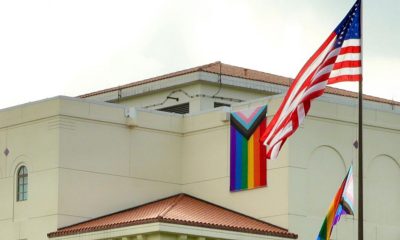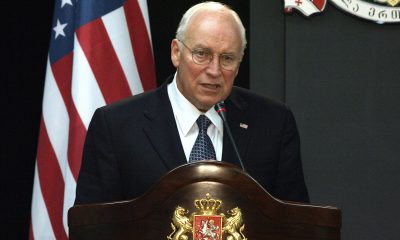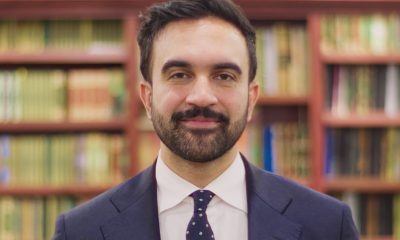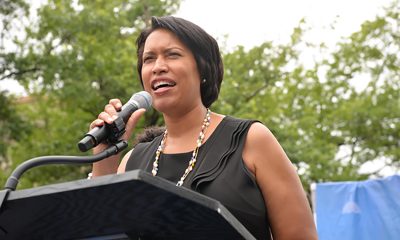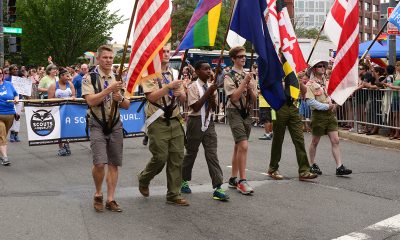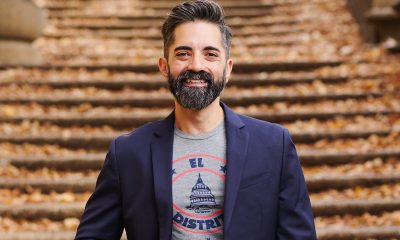Opinions
As the public health emergency ends, a humanitarian crisis begins for LGBTQ asylum seekers
Title 42 ended on May 11
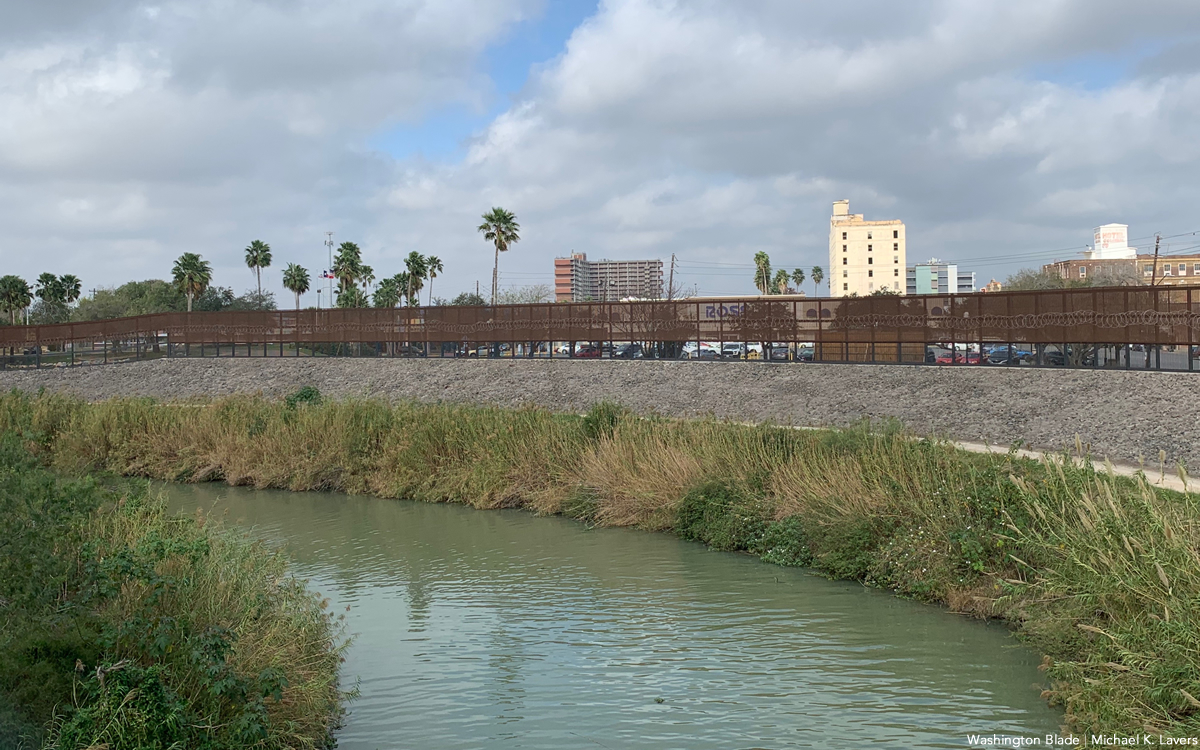
LGBTQIA+ people from around the world who come to the U.S. Southern border seeking safety from escalating discrimination and violence are now met with an impossible new system that denies us our human rights. Under Title 42, we struggled to find pathways from persecution in our home countries. When it was lifted on May 11, Biden replaced it with an asylum ban that forces us to stay in unsafe conditions while we try, and fail, to make an appointment on an app that does not work.
A gay asylum seeker myself, I experienced first-hand the challenges of proving my worthiness of protection under Title 42. Homosexuality is criminalized in a third of the world’s countries, forcing LGBTQIA+ people to face violence, harassment and discrimination, sometimes from our own government authorities. The Title 42 policy launched at the beginning of the COVID emergency prevented us from making an asylum case properly, leaving us in a state of vulnerability and without the protection we desperately needed. We faced increasing risks as we navigated detention or processing centers and were forced to return to countries where our lives were in danger.
I am now the client services manager at Lawyers for Good Government’s Project Corazon, where we coordinate legal services for thousands of LGBTQIA+ people fleeing danger, like I once did. Every day, I see how Biden’s new asylum ban makes pleading such claims nearly impossible. One of our clients, Mario, poses the perfect example.
Mario, a gender non-conforming Guatemalan asylum seeker from the Maya Qʼeqchiʼ community, carries on their late father’s legacy as a traditional herbal medicine expert and human rights advocate. In March 2022, they organized peaceful protests against the country’s homophobic “protection of life and family” bill, which was later passed by the Guatemalan Congress. However, their involvement led to persecution and torture by government-affiliated leaders, who accused them of witchcraft. Expelled from their community under indigenous “laws,” Mario sought refuge within Guatemala but faced ongoing persecution. Surviving two firearm assassination attempts, they fled to the United States’ Southern border to seek asylum.
Arriving at the Matamoros-Brownsville International Bridge, Mario exercised their rights under international law to express their intent to seek asylum directly to a Customs and Border Control asylum officer, the proper process before the U.S. government introduced the notoriously glitchy CBP One app earlier this year. Introduced to create an “orderly” means of arguing an exemption to Title 42, the app instead created yet another barrier to accessing asylum. Instead of accepting their declaration, the officer instructed them to use the app to make an appointment wherein they would check a box claiming they were exempt from the Title 42 public health emergency, and receive an appointment to tell their story and hopefully receive parole so they could begin the asylum process.
Mario managed to get access to a smartphone, but their limited literacy and unfamiliarity with technology posed challenges. The app failed to recognize their darker complexion during the photo capture process, as it did with numerous asylum seekers. Still, Mario did not give up: They struggled to secure an appointment every day, fearing their inability to verify their identity or meet the app’s listed vulnerabilities would hinder their right to request asylum. After 90 days of unsuccessful attempts and increasing dangers in Matamoros, they finally could not wait any longer and chose to instead risk crossing the hazardous river near the International Bridge to enter the U.S. They were intercepted by CBP and processed. Following a 72-hour case review, Mario received one-year parole, enabling them to pursue their asylum case in a safer environment.
If this new asylum ban had been in place, Mario would not be here today. They would have to prove that they had first sought asylum in Mexico, or figure out how to use an app that is not available in their language, or simply be forced to remain in a place where they had received numerous threats on their life. And had they attempted to cross, they would be deported “home” to a country that is notoriously hostile to LGBTQIA+ people, especially those with darker skin, and prohibited from seeking asylum in the U.S. again for five years.
This is now how asylum law works. Under existing asylum procedures that have been the law of the land since 1980, when Title 42 lifted on May 11, Mario should have just been able to walk up to an asylum officer and plead credible fear of harm based on their membership in a persecuted group. However, instead, the Biden administration pushed through critical, harsh changes to how asylum seekers on our southern border can seek protection, directly endangering our community and our lives.
It is not too late for the Biden administration to ensure that the new asylum rule does not exclude or discriminate against LGBTQIA+ people seeking protection in the United States. First, the administration should train immigration officials on the specific challenges facing our community, including understanding the laws and situations facing LGBTQIA+ people in different countries; this will guarantee a fair and appropriate evaluation in each individual case, and will avoid the perpetuation of stereotypes and prejudices that can lead to wrong decisions. Second, the administration must put mechanisms in place to provide legal advice and emotional support to people in our community seeking asylum, as we often face additional barriers due to our sexual orientation or gender identity. Third, the administration must fulfill its promise to create alternative pathways for people at imminent risk of harm, including our community members fleeing oppression.
The LGBTQIA+ community deserves an asylum system in the U.S. that recognizes and protects our fundamental human rights. Only then can we build an asylum system that reflects our values of equality and justice for all.
Estuardo Cifuentes is the client services manager at Lawyers for Good Government’s Project Corazon.

I hope you have a great Thanksgiving and can enjoy it with family and friends and that you have things you can be thankful for this past year. That you have your health. Now here is the column I would have liked to share with you this Thanksgiving:
To all my friends and family. This year I am thankful the felon has left the White House. It feels we can all finally breath again. I am so happy his idea of a ballroom at the White House was a joke, and we can once again walk in Jackie Kennedy’s rose garden, and visit the beautiful East Wing. I am thankful the felon’s personal Goebbels, Stephen Miller, lost his job when the reality that he was a fascist was too much to take. It was wonderful to see the Supreme Court wake up and do their job once again. They stopped drinking the MAGA Kool-Aid and voided all the executive orders calling on museums to hide the history of Black Americans, women, and the LGBTQ community. They told the president he didn’t have the right to place tariffs, and that he couldn’t fire legally appointed members of commissions under the rubric of Congress’s control.
Then I am thankful the Congress began to do its job. That so many Republicans grew a set of balls and decided to challenge Speaker Mike ‘sycophant’ Johnson, reminding him they were an independent part of government, and didn’t need to rubber stamp everything the felon wanted. I was thankful to see them extend the SNAP program indefinitely, and the same with the tax credits for the ACA, agreeing to include these important programs in next year’s budget. Then they went further, and paid for the programs, by rescinding all the tax benefits they had given to the wealthy, and corporations, in the felon’s big ugly bill. Finally realizing it is the poor and middle class who they had to help if the country was to move forward. Then I can’t thank them enough for finally passing the Equality Act, and doing it with a veto proof majority, so the felon had to sign it, before he left office. They did the same for the Choice Act, and the Voting Rights Act. It was a glorious year with so much to be thankful for.
Then I am so thankful Congress finally stood up to the felon and said he couldn’t start wars without their approval, and the Supreme Court ruled they were right. That attacking Venezuela was not something he had the right to do. Then the final thing the court did this year I am thankful for, is they actually modified their ruling on presidential immunity, and said the felon’s grifting was not covered, as under their decision that was private, and not done in his role as president. Again, can’t thank them enough for waking up and doing that.
Then there is even more I am thankful for this year. It was so nice to see Tesla collapse, and Musk lose his trillion-dollar salary. The people finally woke up to him and insisted Congress mandate the satellite system he built, basically with money from the government, was actually owned by the government, and he could no longer control who can use it. It was determined he alone would not be able to tell Ukraine whether or not they can use it in their war defending against the Russian invasion. Then I am so thankful Congress went even further, and approved the funds needed by the Ukrainians for long-range missiles, and a missile defense system, accepting Ukraine was actually fighting a proxy war for the West, and Ukraine winning that war would help keep our own men and women off the battlefield.
And speaking of our military, I thank Congress for lifting the ban on transgender persons in the military, and honoring their service, along with the service of women, Black service members, all members of the LGBTQ community, and all minorities. It was fun to see Pete Hegseth being led out of the Pentagon, and being reminded he wasn’t the Secretary of War. There is no Department of War, it is still the Department of Defense, with congressional oversight. Again, so many things to be thankful for this past year. It seemed like my heart runneth over.
Then my alarm went off and I woke up from my big beautiful dream, only to realize I was still living in the Trumpian nightmare.
Peter Rosenstein is a longtime LGBTQ rights and Democratic Party activist.
Commentary
Elusive safety: what new global data reveals about gender, violence, and erasure
Movements against gender equality, lack of human rights data contributing factors.
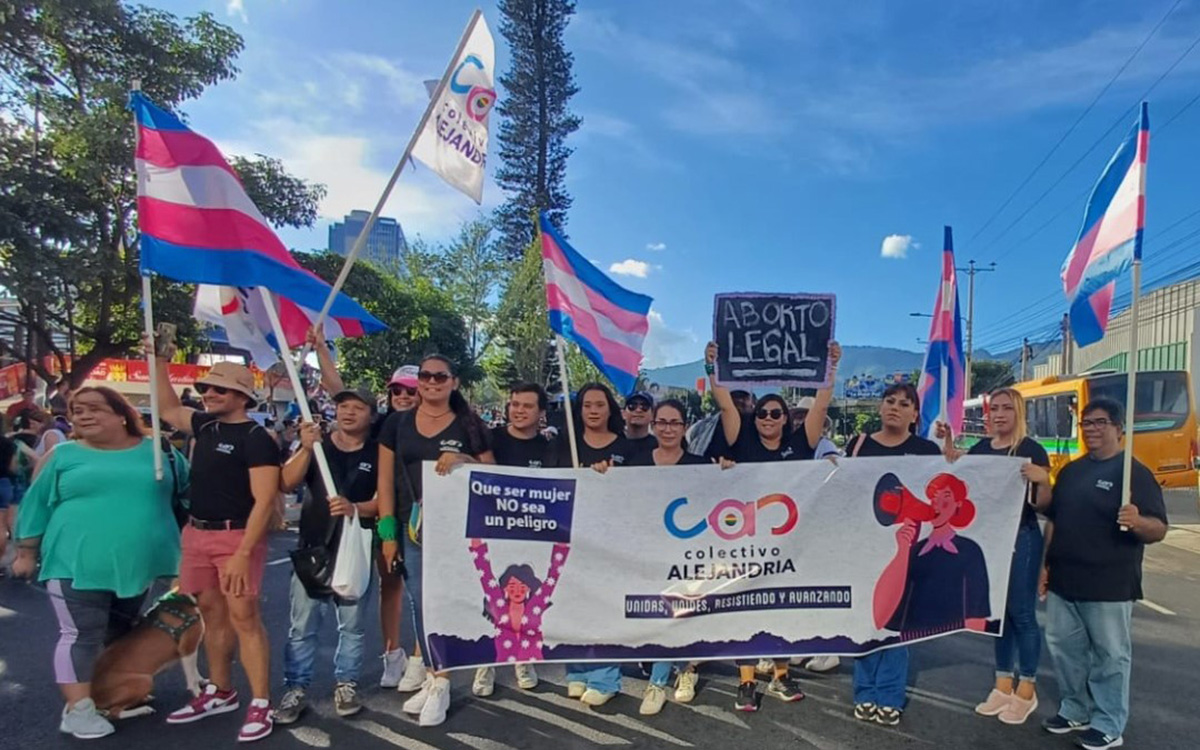
“My identity could be revealed, people can say whatever they want [online] without consequences. [Hormone replacement therapy] is illegal here so I’m just waiting to find a way to get out of here.”
-Anonymous respondent to the 2024 F&M Global Barometers LGBTQI+ Perception Index from Iraq, self-identified as a transgender woman and lesbian
As the campaign for 16 Days Against Gender-Based Violence begins, it is a reminder that gender-based violence (GBV) — both on– and offline — not only impacts women and girls but everyone who has been harmed or abused because of their gender or perceived gender. New research from the Franklin & Marshall (F&M) Global Barometers and its report A Growing Backlash: Quantifying the Experiences of LGBTQI+ People, 2022-2024 starkly show trends of declining safety among LGBTQI+ persons around the world.
This erosion of safety is accelerated by movements against gender equality and the disappearance of credible human rights data and reporting. The fight against GBV means understanding all people’s lived realities, including those of LGBTQI+ people, alongside the rights we continue to fight for.
We partnered together while at USAID and Franklin & Marshall College to expand the research and evidence base to better understand GBV against LGBTQI+ persons through the F&M Global Barometers. The collection of barometers tracks the legal rights and lived experiences of LGBTQI+ persons from 204 countries and territories from 2011 to the present. With more than a decade of data, it allows us to see how rights have progressed and receded as well as the gaps between legal protections and lived experiences of discrimination and violence.
This year’s data reveals alarming trends that highlight how fear and violence are, at its root, gendered phenomena that affect anyone who transgresses traditional gender norms.
LGBTQI+ people feel less safe
Nearly two-thirds of countries experienced a decline in their score on the F&M Global Barometers LGBTQI+ Perception Index (GBPI) from 2022-2024. This represents a five percent drop in global safety scores in just two years. With almost 70 percent of countries receiving an “F” grade on the GBPI, this suggests a global crisis in actual human rights protections for LGBTQI+ people.
Backsliding on LGBTQI+ human rights is happening everywhere, even in politically stable, established democracies with human rights protections for LGBTQI+ people. Countries in Western Europe and the Americas experienced the greatest negative GBPI score changes globally, 74 and 67 percent, respectively. Transgender people globally reported the highest likelihood of violence, while trans women and intersex people reported the highest levels of feeling very unsafe or unsafe simply because of who they are.
Taboo of gender equality
Before this current administration dismantled USAID, I helped create an LGBTQI+ inclusive whole-of-government strategy to prevent and respond to GBV that highlighted the unique forms of GBV against LGBTQI+ persons. This included so-called ‘corrective’ rape related to actual or perceived sexual orientation, gender identity, or expression” and so-called ‘conversion’ therapy practices that seek to change or suppress a person’s gender identity or expression, sexual orientation, or sex characteristics. These efforts helped connect the dots in understanding that LGBTQI+ violence is rooted in the same systems of inequality and power imbalances as the broader spectrum of GBV against women and girls.
Losing data and accountability
Data that helps better understand GBV against LGBTQI+ persons is also disappearing. Again, the dismantling of USAID meant a treasure trove of research and reports on LGBTQI+ rights have been lost. Earlier this year, the US Department of State removed LGBTQI+ reporting from its annual Human Rights Reports. These played a critical role in providing credible sources for civil society, researchers, and policymakers to track abuses and advocate for change.
If violence isn’t documented, it’s easier for governments to deny it even exists and harder for us to hold governments accountable. Yet when systems of accountability work, governments and civil society can utilize data in international forums like the UN Universal Periodic Review, the Convention on the Elimination of All Forms of Discrimination Against Women, and the Sustainable Development Goals to assess progress and compliance and call for governments to improve protections.
All may not be lost if other countries and donors fill the void by supporting independent data collection and reporting efforts like the F&M Global Barometers and other academic and civil society monitoring. Such efforts are essential to the fight against GBV: The data helps show that the path toward safety, equality, and justice is within our reach if we’re unafraid of truth and visibility of those most marginalized and impacted.
Jay Gilliam (he/him/his) was the Senior LGBTQI+ Coordinator at USAID and is a member of the Global Outreach Advisory Council of the F&M Global Barometers.
Susan Dicklitch-Nelson (she/her/hers) is the founder of the F&M Global Barometers and Professor of Government at Franklin & Marshall College.
Commentary
Second ‘lavender scare’ is harming our veterans. We know how to fix it
Out in National Security has built Trans Veterans State and Local Policy Toolkit
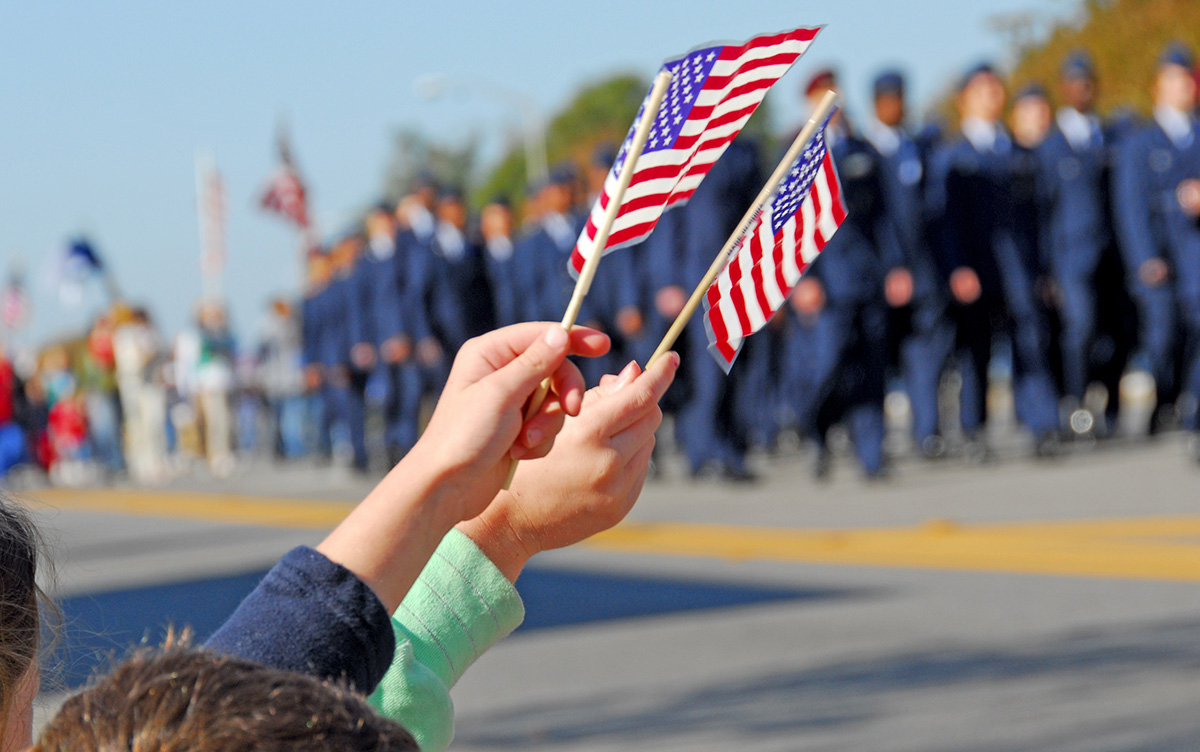
Seventy years after the first “lavender scare” drove LGBTQ Americans from public service, a second version is taking shape. Executive directives and administrative reviews have targeted transgender servicemembers and veterans, producing a new wave of quiet separations and lost benefits.
The policy language is technical, but the result is personal. Veterans who served honorably now face disrupted healthcare, delayed credentials, or housing barriers that no act of Congress ever required. Once again, Americans who met every standard of service are being told that their identity disqualifies them from stability.
Out in National Security built the Trans Veterans State and Local Policy Toolkit to change that. The toolkit gives state and local governments a practical path to repair harm through three measurable actions.
First, continuity of care. States can keep veterans covered by adopting presumptive Medicaid eligibility, aligning timelines with VA enrollment, and training providers in evidence-based gender-affirming care following the World Professional Association for Transgender Health Standards of Care Version 8.
Second, employment, and licensing. Governors and boards can recognize Department of Defense credentials, expedite licensing under existing reciprocity compacts, and ensure nondiscrimination in state veterans’ employment statutes.
Third, housing stability. States can designate transgender-veteran housing liaisons, expand voucher access, and enforce fair-housing protections that already exist in law.
Each step can be taken administratively within 90 days and requires no new federal legislation. The goal is straightforward: small, state-level reforms that yield rapid, measurable improvement in veterans’ daily lives.
The toolkit was introduced during a Veterans Week event hosted by the Center for American Progress, where federal and state leaders joined Out in National Security to highlight the first wave of state agencies adopting its recommendations. The discussion underscored how targeted, administrative reforms can strengthen veterans’ healthcare, employment, and housing outcomes without new legislation. Full materials and implementation resources are now available at outinnationalsecurity.org/public-policy/toolkit, developed in partnership with Minority Veterans of America, the Modern Military Association of America, SPARTA Pride, and the Human Rights Campaign.
These are technical fixes, but they carry moral weight. They reaffirm a basic democratic promise: service earns respect, not suspicion.
As a policy professional who has worked with veterans across the country, I see this moment as a test of civic integrity. The measure of a democracy is not only who it allows to serve but how it treats them afterward.
The second “lavender scare” will end when institutions at every level decide that inclusion is an obligation, not an exception. The toolkit offers a way to begin.
For more information or to access the toolkit once it is public, visit outinnationalsecurity.org/toolkit.
Lucas F. Schleusener is the CEO of Out in National Security.
-

 District of Columbia2 days ago
District of Columbia2 days agoBowser announces she will not seek fourth term as mayor
-

 U.S. Military/Pentagon2 days ago
U.S. Military/Pentagon2 days agoPentagon moves to break with Boy Scouts over LGBTQ and gender inclusion
-

 Drag3 days ago
Drag3 days agoPattie Gonia calls out Hegseth’s anti-LGBTQ policies — while doing better pull-ups
-

 District of Columbia3 days ago
District of Columbia3 days agoSecond gay candidate announces run for Ward 1 D.C. Council seat

